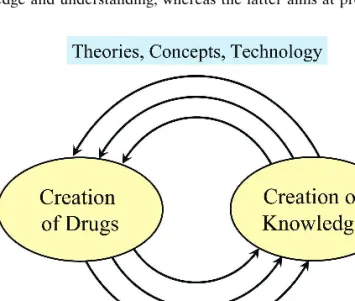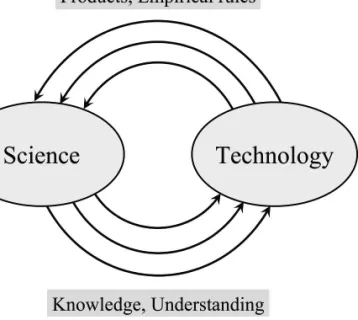Editorial
Pharmaceutical Sciences, Scientists, and Journals—A Tribute to
Pharmaceutical Research for Its Coming of Age
Most if not all readers of and contributors to this journal pride themselves of being pharmaceutical scientists. And when asked to define this label, they may begin with the tautology that they are workers in pharmaceutical sciences and continue by listing some of the many disciplines within this huge realm. In so doing, they will certainly mention me-dicinal and pharmaceutical chemistry, phytochemistry, phar-macokinetics, pharmacodynamics, biopharmacy, pharmaceu-tical technology, and clinical pharmacy, to name some very broad and traditional disciplines. They may even mention the ever increasing role played in the pharmaceutical sciences by immunochemistry and immunology, computer sciences and bioinformatics, genomics, proteomics, and “other-omics” (in-cluding pharmaco-economics!), and so on. The more the list goes on, the more pharmaceutical sciences appear to lose their very essence and dissolve among many other sciences or to become a mere technological extension thereof.
Yet pharmaceutical sciences exist and thrive. They exist, being simultaneously science and technology, and they thrive, as this journal among others have been demonstrating for 20 years and more. This editorial will reflect first on the essence of pharmaceutical sciences and then on the illusory di-chotomy between science and technology. As I will try to show, the policy, structure, content, and character of this jour-nal illustrate my arguments to quasi-perfection.
The common denominator of all pharmaceutical sciences and technologies is the pharmakon, a broad concept that en-compasses drugs and medicines. The former are defined as chemical substances used in the treatment, prevention, or di-agnosis of diseases and which are the active components of medicines (i.e., remedies). To a readership of pharmaceutical scientists, such a statement is trivially evident—a rushing through open doors. Our mission as pharmaceutical scientists is a) to discover and develop new drugs and medicines and b) to define the optimal conditions of use of known and novel drugs (i.e., posology, pharmacogenetic and other factors af-fecting drug response, drug-drug interactions, unwanted ef-fects, etc.). But is this drug-oriented mission our only one? The answer is a straighforward “no,” as there is another, more fundamental scientific mission to drug research; namely, its
knowledge-oriented mission (1). Fundamental research in any
discipline aims at creating knowledge. However, drug re-search is special in that its products are also used as its tools. One wonders what proportion of the general public realizes that drugs in particular and pharmacological agents in general have contributed significantly to our understanding of the properties of living matter. To take an example, just imagine what our knowledge of the brain’s molecular and supramo-lecular mechanisms would be were it not for the use of drugs as research tools.
But these two missions are synergetic and build on each
other. Advances in our understanding create the conditions for the discovery of new drugs, which in turn are used to probe biological systems and gain new understanding, which in turn . . . (Fig. 1). In other words, drug researchers are in-deed in the unique position that the fruits of their efforts can serve two fundamental aspirations of humankind: that of well-being and health and that of knowledge and understand-ing. This is the implicit message of so many papers published in this journal; namely, the undissociable nature of the two missions and indeed their admirable synergy.
As listed in the first paragraph, one of the bona fide pharmaceutical sciences is pharmaceutical technology. This terminology may confuse a few colleagues in other science departments who see a sharp division between technology and science. Readers of Pharmaceutical Research and other major journals in the field know better, as they can find out month after month how much basic research goes into devel-oping new formulations.
But it is in all fields of scientific research, and not only in the pharmaceutical disciplines, that the dichotomy between science and technology is an illusory one. Indeed, history shows repeatedly that great technological breakthroughs have laid the ground for scientific revolutions (thermodynamics comes to mind), and scientific achievements have allowed new instruments and machines to be created. Science and technology are indeed different, as the former aims at knowl-edge and understanding, whereas the latter aims at products
Fig. 1. Advances in our understanding create the conditions for the
discovery of new drugs, which in turn are used to probe biological systems and gain new understanding, which in turn . . . . It is also of great interest that in the Japanese language, drugs are “created” rather than “discovered” (2)!
Pharmaceutical Research, Vol. 22, No. 2, February 2005 (© 2005)
DOI: 10.1007/s11095-004-1182-6
and empirical rules. But the two are so intimately intertwined and so synergetic that one cannot progress without the other (Fig. 2).
In conclusion, Pharmaceutical Research and its peers demonstrate the double mission (drug-oriented and knowl-edge-oriented) of drug research, and they testify to the syn-ergy between science and technology. In so doing, they offer wisdom in addition to information and knowledge.
Bernard Testa
Former Editor–Europe, Pharmaceutical Research Department of Pharmacy University Hospital Centre Lausanne, Switzerland REFERENCES
1. B. Testa. Missions and finality of drug research: a personal view.
Pharm. News 3:10–12 (1996).
2. K. Sugano. Physicochemical and biological profiling in drug re-search. Invited lecture at the LogP2004 Symposium, Swiss Fed-eral Institute of Technology, Zurich, 29 February–4 March 2004.
Fig. 2. Scientific advances create the conditions for the discovery of
new instruments and machines, and advances in technology open the way to scientific breakthroughs. Science creates the conditions for technological progress, which in turn allows new information and knowledge to be obtained, which in turn . . . .
Testa 174

